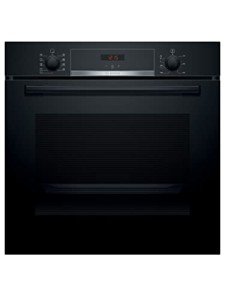The Rise of Built-In Ovens: A Seamless Approach to Modern Cooking
In contemporary kitchen areas, where style visual appeals blend seamlessly with functionality, one home appliance stands apart as a true video game changer: the built-in oven. As homeowners and chefs alike continue to look for innovative options that improve their cooking experience, built-in ovens have actually become progressively popular. This post checks out the advantages, factors to consider, and patterns surrounding built-in ovens, highlighting why they are an important function in modern-day cooking areas.
What is a Built-In Oven?
A built-in oven is a kitchen area appliance designed to be integrated into the cabinets of a kitchen rather than standing alone. Unlike conventional freestanding ovens, which can be moved and positioned anywhere, built-in ovens can be found in numerous styles and sizes to fit particularly within designated spaces. Offered in single or double setups, these ovens use a streamlined look that matches modern kitchen area designs.
Benefits of Built-In Ovens
1. Space-Saving Design
One of the most appealing benefits of built-in ovens is their space-saving style. By integrating the oven into cabinets, you can maximize valuable counter and floor area. This is especially helpful in smaller kitchens, where maximizing space is necessary. Built-in ovens can be installed at eye level, making them more available and minimizing the need to flex down.
2. Visual Appeal
Built-in ovens contribute to a sleek and cohesive kitchen design. Available in numerous surfaces-- such as stainless-steel, black, white, and custom kitchen cabinetry-- they can blend flawlessly into the total decor. This visual appeal boosts the kitchen's visual harmony and raises the area, producing a modern and advanced environment.
3. Improved Functionality
Numerous built-in ovens come geared up with innovative cooking technologies, such as convection cooking, steam ovens, and smart features. These improvements enable for flexible cooking choices, making it simpler to accomplish professional-level results at home. Smart built-in ovens can even link to Wi-Fi, making it possible for users to control the oven remotely, receive alerts, and gain access to a range of cooking programs and recipes.
4. Enhanced Ventilation

Because built-in ovens can be integrated with kitchen hoods and ventilation systems, they can help keep better air quality and decrease cooking odors. This is especially considerable for those who love to prepare with fragrant spices and components, as an effective ventilation system can keep the kitchen comfy and welcoming.
5. Personalization Options
Built-in ovens use a vast array of modification options to suit individual cooking styles and needs. From professional-grade appliances with multiple cooking modes to compact designs for smaller sized cooking areas, property owners can pick the oven that fits their specific requirements. integrated ovens for sale provide customizable front panels, enabling you to match the oven's look to your cabinets for a truly combined look.
Considerations When Choosing a Built-In Oven
While built-in ovens have many benefits, there are essential considerations to bear in mind before purchasing:
1. Rate
Built-in ovens usually come with a higher price than their freestanding counterparts due to their design and installation requirements. It's essential to factor in both the expense of the oven and any additional costs connected to kitchen cabinetry modifications or setup.
2. Installation Requirements
Setting up a built-in oven often needs expert assistance, especially if you need to customize existing cabinets. Guarantee that you think about any costs related to setup, including labor and prospective cabinetry adjustments.
3. Size and Dimensions
Before buying a built-in oven, determine the designated space properly to make sure an appropriate fit. Built-in ovens can be found in different sizes and setups, so selecting one that aligns with your needs and kitchen area style is crucial.
4. Lifestyle and Usage
Consider your cooking routines and needs when choosing a built-in oven. If you frequently host big gatherings, a double oven might be more helpful. On the other hand, if you have a compact cooking area, a single-wall oven might be enough.
Patterns in Built-In Ovens
The cooking area home appliance market is continually developing, and built-in ovens are not exempt from emerging trends. Some existing patterns consist of:
Smart Technology Integration: With the rise of clever home innovation, built-in ovens now often include connectivity alternatives. This permits users to keep track of cooking progress and change settings via mobile apps.
Energy Efficiency: As sustainability becomes a top priority, numerous manufacturers are purchasing energy-efficient built-in ovens that reduce energy consumption while keeping efficiency.
Multi-functional Designs: Built-in ovens now provide functions such as air frying, slow cooking, and steaming, offering flexibility that meets a large range of cooking approaches.
Conclusion
Built-in ovens certainly represent a best blend of style, function, and convenience in today's kitchen areas. As more property owners choose this modern-day solution, the focus shifts to producing a cooking space that is as visually pleasing as it is practical. Whether you are developing a new home or remodeling your cooking area, thinking about a built-in oven could raise your culinary experience and change your cooking area into an elegant and functional haven. With a variety of options offered and continuous developments in technology, built-in ovens remain a standout choice for both newbie cooks and cooking lovers alike.
